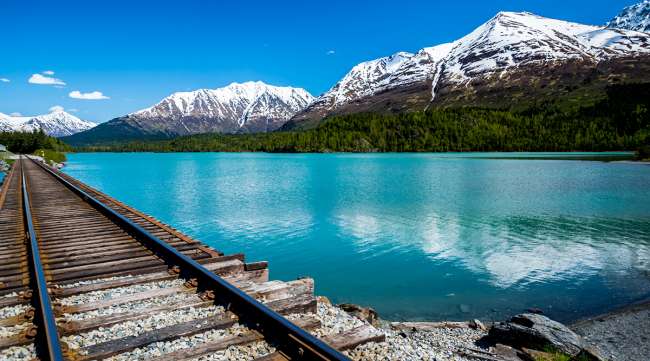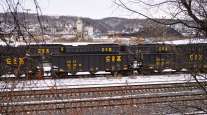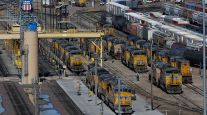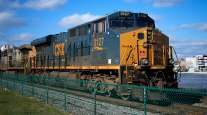Possibilities, Costs ‘Enormous’ for A2A Rail

[Stay on top of transportation news: Get TTNews in your inbox.]
The backers of a new rail line to link Alaska to Canada and Lower 48 markets insist it would generate upward of $5 billion of freight revenue through the state.
Alaska-Alberta Railway Development Corp. founder Sean McCoshen told attendees of the Resource Development Council for Alaska’s annual conference that the 1,500-mile stretch of railroad would provide trans-Pacific shippers an alternative to bottlenecked ports and rails lines along the West Coast.
Oft referred to as the A2A rail line, McCoshen said just-in-time shippers would benefit from the fact that south central Alaska ports are about four days closer to East Asia by vessel than ports in the Lower 48 and British Columbia despite the longer distance by train.
“Our own economic model looks at steady state revenue from export commodities in Canada of almost $5 billion per year. We must complete this project to show shippers we can bring a variety of commodities to and from Alaska’s Pacific ports competitively with the slower, more energy-intensive rail and pipeline routes that exist or are under construction in Canada,” McCoshen said.

Oft referred to as the A2A rail line, Alaska-Alberta Railway Development Corp. founder Sean McCoshen said just-in-time shippers would benefit from the fact that south central Alaska ports are about four days closer to East Asia by vessel than ports in the Lower 48 and British Columbia despite the longer distance by train. (Getty Images)
For comparison, the Alaska Railroad typically generates about $110 million in passenger and freight revenue per year.
The project would start by constructing rail from the north end of the Alaska Railroad’s tracks near North Pole and continue south and east past Tok and Tetlin to the Canadian border for about 200 miles of new track in the state. That section would link to 1,300 miles of track built in Canada, starting near Fort McMurray in northeast Alberta.
It’s about a $13 billion endeavor, according to company estimates.
Canadian rail lines currently get as close to Alaska as Whitehorse in the Yukon.
“The possibilities are enormous, but so is the project,” McCoshen said.
Former Lt. Gov. Mead Treadwell also is working on the project as A2A’s chief operating officer.
The idea of a freight rail line to connect Alaska to the rest of the continent has been analyzed several times, but has never made it far past the conceptual stage.
The project is being driven in large part by a need for new export routes for Alberta’s heavy oil production. Studies analyzing the feasibility of a conceptual rail line linking Alaska and Canada have looked at shipping 1 million barrels of oil per day or more through Alaska. However, McCoshen stressed in a brief interview that while oil shipments would be a part of the private rail line’s business it would be a general cargo line that “ships everything under the sun.”
He noted in his presentation that the Canadian government last year passed a law prohibiting additional tanker traffic out of British Columbia ports and said the lack of new shipping routes and port facilities in the country has stymied growth in other Canadian commodity exports.
Importantly, it would open up export routes for many stranded mineral deposits in northern Canada and interior Alaska, he said, calling the potential mining benefits “the economic icing on the cake” for the project.
In June, the Alaska Railroad signed an agreement with A2A that allows McCoshen’s firm to undertake the environmental and engineering studies for the project while the state-owned railroad corporation would apply for the additional right-of-way from the state. A2A would then rent the track from the Alaska Railroad, he said.

Dunleavy
A2A is currently waiting on a border-crossing permit from the White House, and McCoshen thanked Gov. Michael Dunleavy for advocating to President Donald Trump for its approval.
The Alaska Legislature also passed a resolution in May urging the president to approve the permit.
McCoshen added that many, but not all, of the baseline impact studies have been done for the project.
“We have a good solid two years of work ahead of us at least before we can get to a final investment decision,” he said.
He emphasized the new infrastructure is necessary in a global economy as it would help balance the North American trade deficit with Asia.
“This is a 21st-century project, not a 19th-century project,” McCoshen said. “It is one of several long rail links being pursued around the world and one that will more closely tie the economies of Alaska, Canada and Asia.”
Want more news? Listen to today's daily briefing:
Distributed by Tribune Content Agency, LLC




